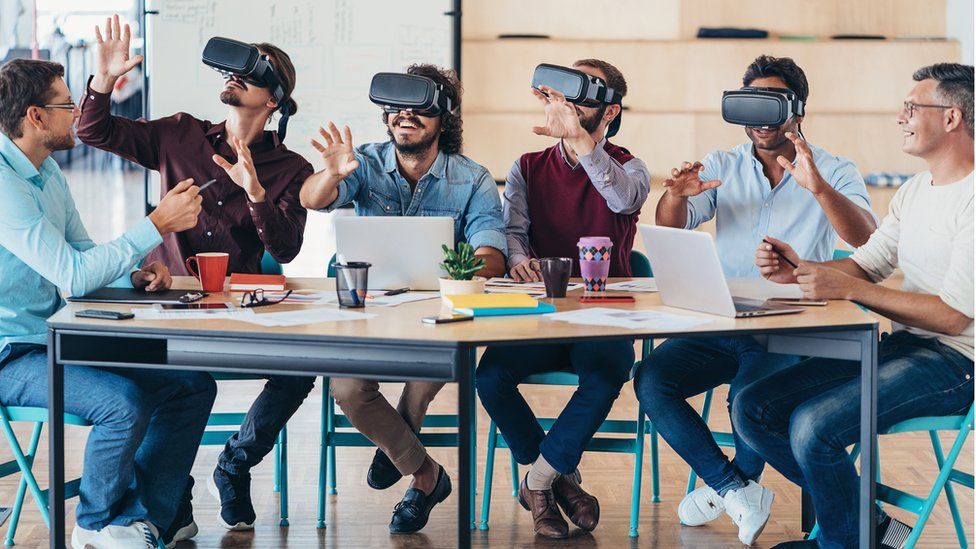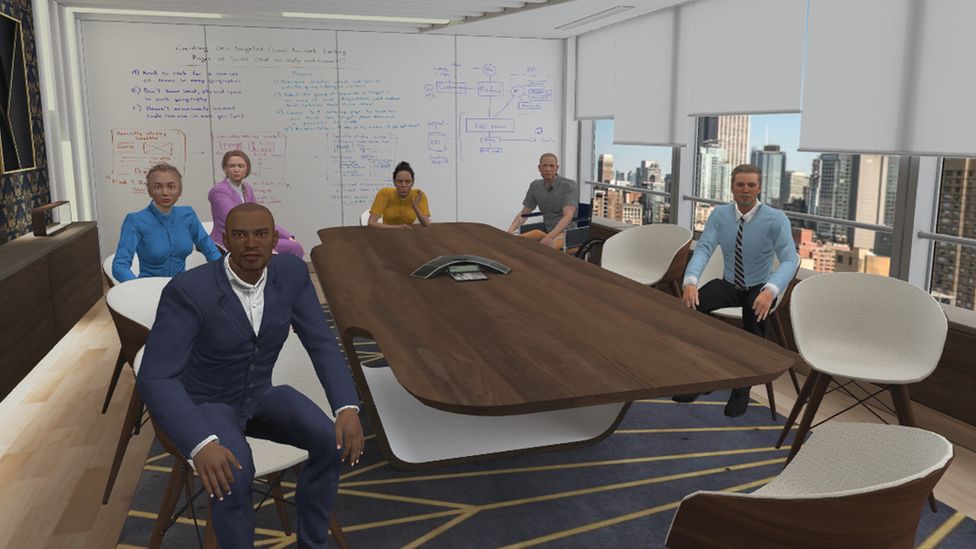Virtual reality brings new vision to workplace training

Imagine you have been transported to Mars as a robot avatar.
Around you in this virtual reality (VR), computer-simulated world are other people also walking around as robots.
Your mission is to work together to overcome a number of challenges, and escape the planet in a space pod. The mission is only successful if all the robots manage to get away, and not if one or two blast off on their own.
This isn’t a video game though. Rather it is a training session where you and your co-workers are all wearing VR headsets.
As awaydays go, it does sound more fun than sitting in a conference room for hours on end, while your bosses tell you about your organisation’s exciting plans for the next year.

The trip to Mars is a team-building exercise, named Apollo, that was built by a UK firm called Jenson8, which specialises in VR-based training platforms.
Each workplace team gets three or four attempts in the simulation to figure out how to escape. And participants can experience Apollo from different perspectives – in a leadership role, as a standard robot, or as an observer.
Afterwards, when the VR goggles have been taken off, the group is asked to discuss the different dynamics that helped them fail or succeed.
“When people are in this immersive experience, it takes away many preconceived notions that they carry with them when they’re in the workplace,” says Bryan Barnes, head of research and development at Jenson8. “And it allows them to show up as themselves rather than trying to play that work character.”
He adds that participants can gain a greater understanding of their role in the group, for better or worse. And that this can lead to honest conversations that help to build a more successful team.
Pandemic lockdowns introduced millions of workers to home working and video meetings, and now training is changing as well.
The regular Zoom calls since March 2020 made us all realise that we don’t actually need to be be in the same room for meetings. And it is now increasingly the same for training courses.
Add the increased development of VR technology, and a growing number of firms are asking staff to put on a pair of VR goggles when it is time for them to have an awayday, or have their skills and knowledge refreshed.

Mike Wynn, is in charge of VR-based training at Bank of America. He says it particularly appeals to younger employees, who are used to the technology thanks to years of playing immersive computer games.
“We’ve relied on the very same traditional methods of training for the longest of times, but people have changed, and the way that they absorb and digest information has most certainly changed,” he says.
“The attention spans are not the same as they were a decade ago and even longer. Now, we want information quickly, and we want to be able to see things versus just reading it.”
But is there any evidence that VR training is actually more effective? Staff learning via VR do so four times faster than if they are in a classroom, according to a study last year by accountancy giant PricewaterhouseCoopers. The report also found that employees were 1.5 times more focused in VR classes.


New Tech Economy is a series exploring how technological innovation is set to shape the new emerging economic landscape.

Edwina Fitzmaurice, is in charge of VR technology at fellow global accountancy business Ernst & Young. She says that another benefit to VR-based training is that users can more easily keep practising.
“People like the idea they can have a go again, they can learn again,” she says. “You get much higher retention rates, you get much better engagement scores.
“You get much better results because people are able to do it over and over, and they feel like they’re in it. We all know you learn by doing more than reading.”
Others point out that VR training is often more cost effective and safer than real world training, particularly if you are teaching someone to do a dangerous job. Rather than put someone straight into a high-risk environment, such as an oil rig, chemical plant, or a hospital emergency room, they can go through a VR simulation first.
In addition, many VR training systems give the user feedback rather than a human boss. One such provider is London-based VirtualSpeech, which offers VR-based training for public speaking and leadership skills.
Some people are said to be more receptive to negative feedback if it comes from a computer. And VirtualSpeech’s founder and chief executive, Sophie Thompson, says that computers are often better at giving it.
“People aren’t good at giving honest feedback, and you have to explicitly ask. Whereas a machine isn’t worried about your feelings.”

However, VR training is not without its critics. For example, some users are said to find the experience of wearing VR goggles uncomfortable, or it makes them feel giddy or nauseous, others complain of headaches or eyestrain.
Ernst & Young’s Ms Fitzmaurice agrees that the sector needs more regulation. “Getting the balance right between governance and innovation is the key,” she says.
“You have to allow enough to allow the innovation to happen, and you want enough governance – actually, one feeds the other.”
